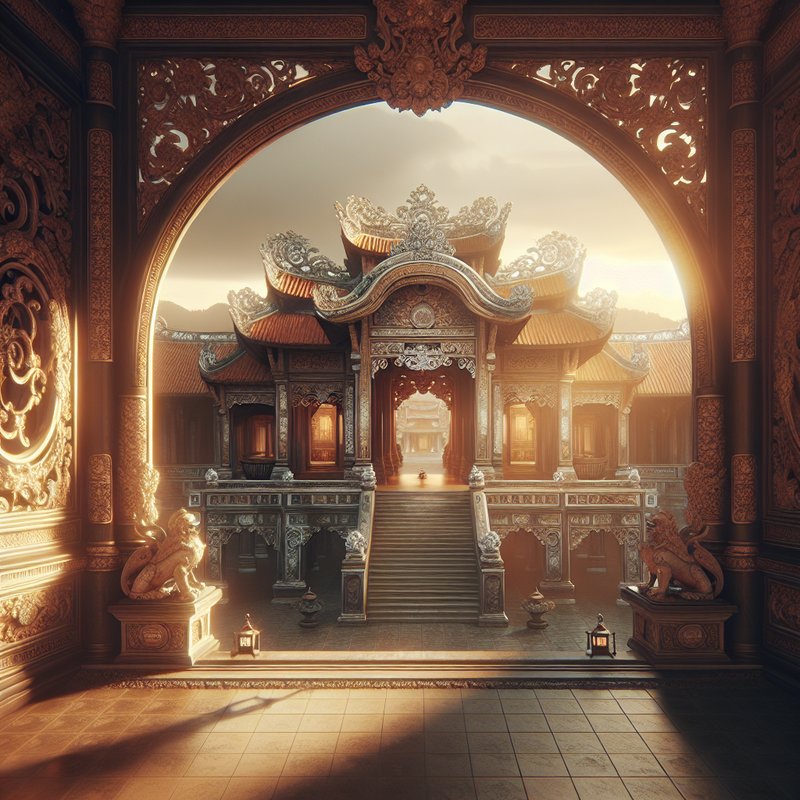The Architectural Splendor of Vietnam’s Royal Palaces

The royal palaces of Vietnam stand as testaments to the architectural brilliance of past dynasties. These grand structures not only reflect artistic prowess but also embody the cultural and historical narratives of Vietnam’s imperial history.
With their intricate designs and symbolic motifs, palaces like the Imperial City of Hue offer a glimpse into the opulent lifestyle and governance of the Nguyen dynasty. Each palace tells a unique story through its design, layout, and decor, providing invaluable insights into the priorities and aesthetics of the era.
The meticulous restoration work undertaken to preserve these monuments allows visitors to experience the royal grandeur as it once was, making these sites prominent attractions for both history enthusiasts and tourists eager to immerse themselves in Vietnam’s cultural heritage.
Unraveling the Mysteries of Royal Ceremonies and Traditions

Vietnam’s royal customs and traditions provide a fascinating look into the social and cultural fabric of ancient times. From elaborate coronation ceremonies to the intricate rituals of daily court life, these traditions reveal the values, beliefs, and hierarchies that defined royal society.
Elaborate ceremonies performed with solemnity and grandeur reflect the blend of Confucian, Taoist, and Buddhist influences that shaped the court’s functioning. Rituals such as the royal ancestor worship and the celebration of significant festivals highlight the deep-rooted respect for heritage and continuity within the royal family.
Adults and children alike are captivated by stories of these age-old traditions, which continue to inspire and influence modern-day cultural events and practices in Vietnam. These ceremonial practices serve as a bridge connecting the past to the present, ensuring the preservation of royal legacy.
The Influential Royal Dynasties of Vietnam

The dynasties that ruled Vietnam left indelible marks on the country’s history and cultural identity. Key royal families such as the Ly, Tran, Le, and Nguyen dynasties played pivotal roles in shaping Vietnam’s political landscape, military strategies, and cultural developments.
The Nguyen dynasty, which established Hue as the imperial capital, is particularly notable for its influence in the unification and modernization of Vietnam. Their legacy includes significant contributions to the country’s literary, artistic, and architectural heritage, each reflecting unique attributes of the era.
Understanding the impact of these dynasties provides a comprehensive overview of Vietnam’s evolution through the ages. The cultural renaissance during their reigns showcases their lasting influence on modern Vietnam, where remnants of their rule are celebrated and studied for their historical significance.
Visiting Vietnam’s Royal Sites: A Cultural Adventure

Exploring Vietnam’s royal sites offers an enriching experience for travelers seeking to connect with the country’s regal past. Key destinations such as the Complex of Hue Monuments, a UNESCO World Heritage Site, invite visitors to explore a rich tapestry of imperial history through its palaces, temples, and tombs.
Each site provides an immersive experience, with educational tours and informative exhibits detailing the significance of royal contributions to Vietnam’s national identity. These excursions allow tourists to step back in time, walking the paths of emperors and experiencing the historical grandeur first-hand.
In addition to historical exploration, many of these sites offer cultural performances and traditional craft showcases, enriching visitors’ understanding of royal heritage through interactive and engaging means. These experiences ensure that the legacy of Vietnam’s royal past continues to enchant and educate future generations.

Leave a Reply